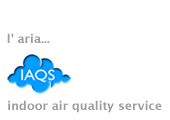What is – can be found in the atmosphere as incomplete combustion residues in industrial plants, heating and vehicle emissions. Are for the most part absorbed and conveyed from carbonaceous particles (fuliggini) issued by the same sources. The issuance of I.P.A. the environment is very variable depending on the type of source, fuel type and combustion quality. The presence of these compounds in the exhaust gas of motor vehicles is due both to the fraction present as such in the fuel, both the fraction for pirosintesi originated during the burning process.
Method of measurement – The fine fraction of particulate matter (PM10) contained in a known volume of air is collected on fiberglass membrane or of quartz; This membrane is subjected to extraction with cyclohexane and analysing the retrieved the I.P.A. are quantified using Gas chromatographic technique identify the individual components.
Damage caused – A considerable number of polycyclic aromatic hydrocarbons have carcinogenic activity. In particular, the estimates of the World Health Organization show that nine out of a hundred are exposed to a concentration of 1 ng/m3 of Benzo(to) pyrene are at risk of contracting cancer.
Evolution – The pattern finds a strong seasonal dependence and a worse situation in the urban stations than outside. The dependence of the intensity of vehicular traffic is very strong with high values in the winter months. The trend over the years still detects some improvement.
Metals
What is – Metals in particulate air pollution originate from a wide variety of sources: cadmium and zinc are generally originated mainly from industrial sources, copper and nickel from combustion processes, the lead vehicle car emissions. Iron comes from soil erosion, from the use of fossil fuels and the production of ferrous alloys..
Method of measurement – The fine fraction of particulate matter (PM10) a known volume of air is collected on fiberglass filters or of quartz, which undergo mineralization using Nitric Acid. The solution obtained determines the concentration of metals by atomic absorption spectrometry.
Damage caused – Among the metals that were monitored, those bets are toxicologically nickel, cadmium and lead. Nickel compounds and cadmium are classified by the International Agency for research on cancer as a carcinogen for humans. For lead was highlighted a wide range of toxic effects, because that substance interferes with many enzyme systems.
Evolution - The only metal for which there is a reference in the Italian legislation is the lead, for which there is an annual average limit value of 0,5 µg/m3. The values determined in the station of Turin via della Consolata are below this limit and have a strong seasonal dependence. The values of cadmium detected at via della Consolata, Carmagnola and Buttigliera are, on the basis of data provided by the World Health Organization, the lower limits of the range of concentrations detected in European urban areas, While nickel values are those typical of an urban area.







